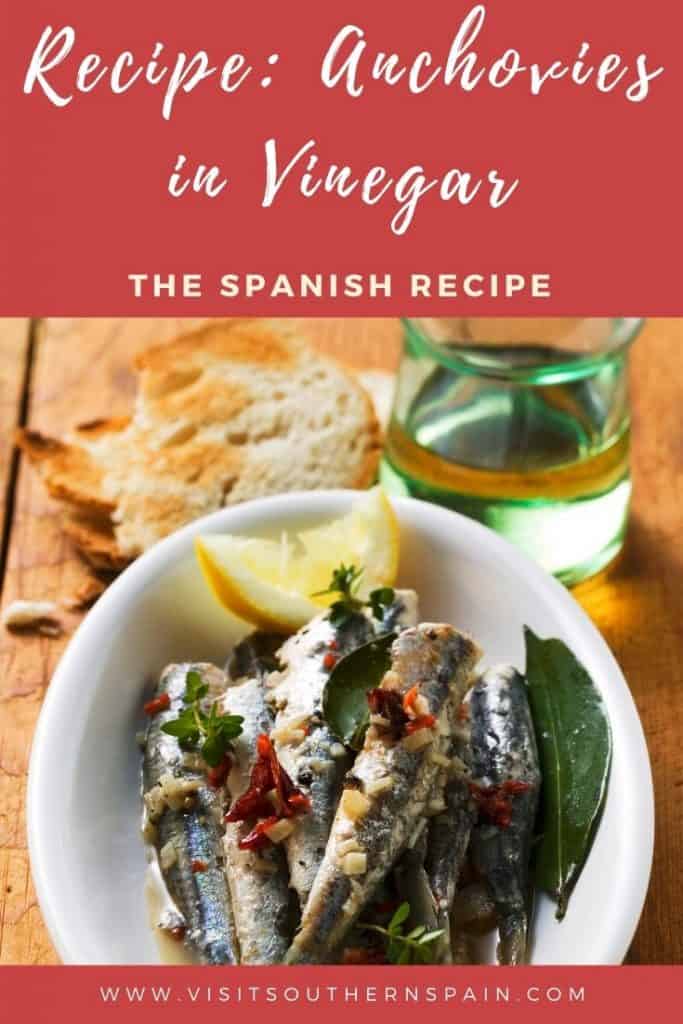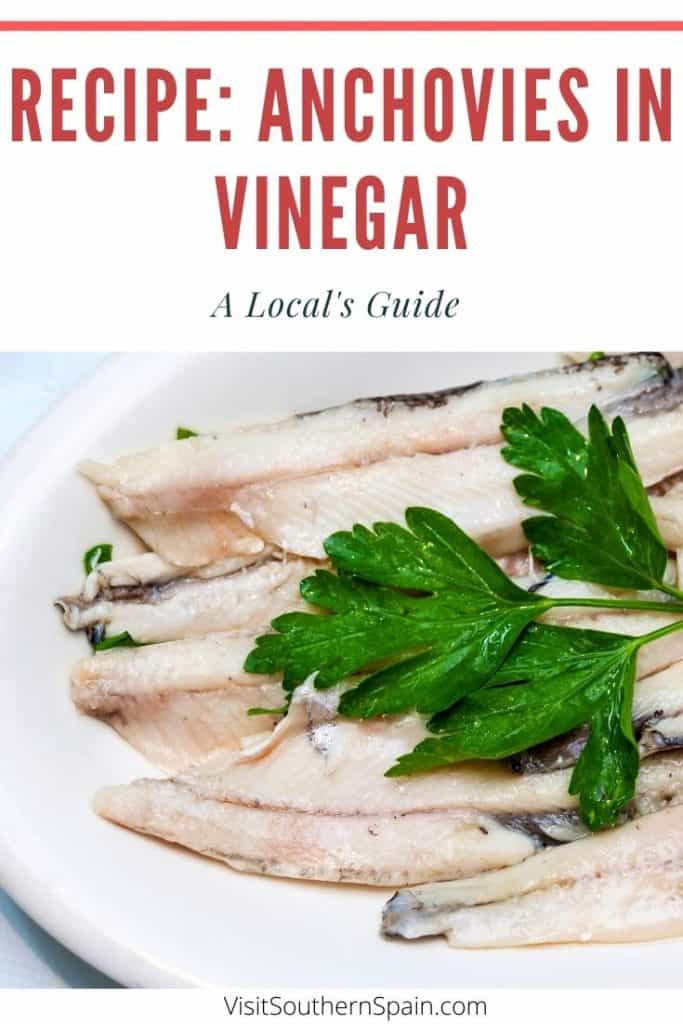Here’s an easy-to-follow Spanish boquerones recipe to enjoy at home!
The Boquerones en Vinagre in English means anchovies in vinegar, is a type of appetizer that had its origins in Southern Spain, also known as Andalusía.
Different historians agree that the origin of the anchovies in vinegar dates back to the 8th century, which means that they have existed for more than 3000 years!
In the present day, anchovies in vinegar are the ideal appetizer for these summer days.
If you are walking on the streets of Spain, you are probably going to find multiple groups of friends sharing a plate of Spanish snacks with a cold beer!
If you love Spanish cuisine, this is one of the best tapa recipes from Spain you will enjoy.
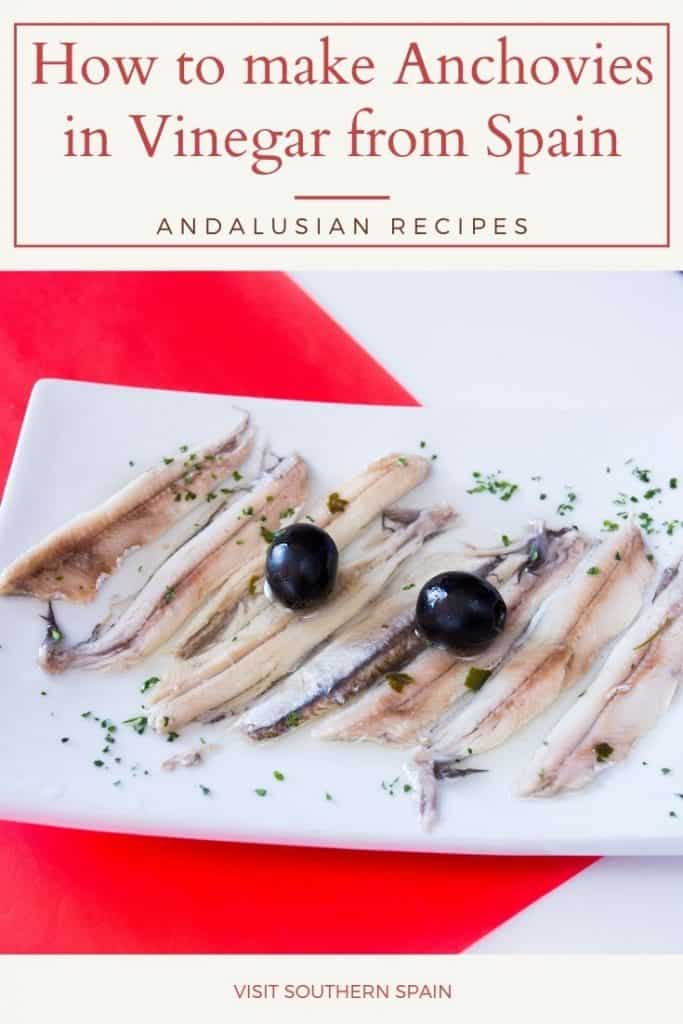
You, dear reader, support this blog. If you purchase through a link, we earn a small commission. As an Amazon Affiliate, we earn from qualifying purchases.
Pssst…!!?? You can’t get enough of Spanish tapa recipes? Have a look at my other posts:
Background of the Boquerones in Vinegar
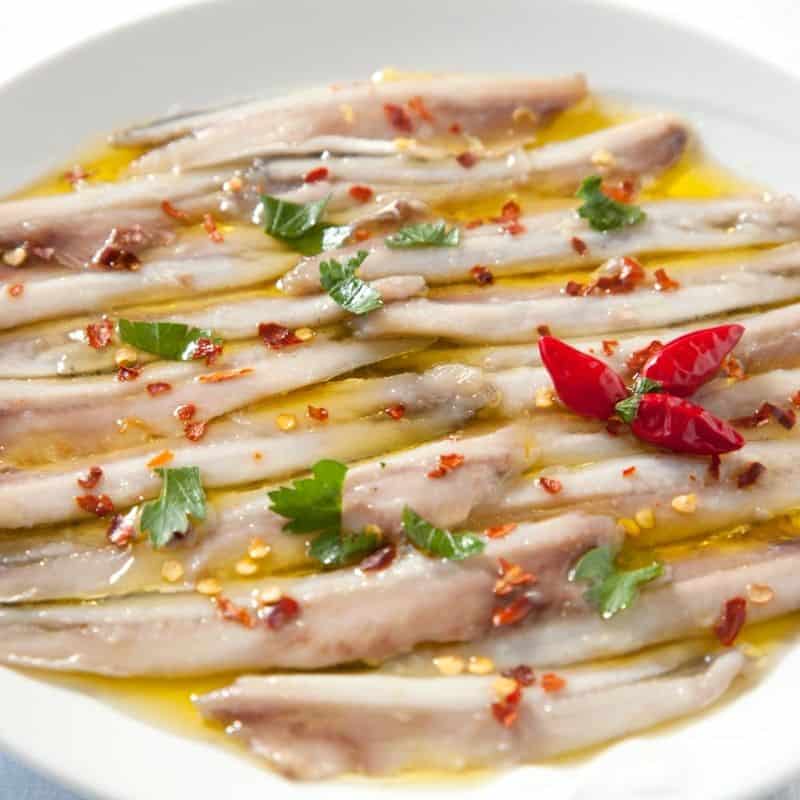
In English, Boquerones meaning is anchovies, specifically referring to the fresh variety rather than the salted or canned version.
Boquerones en Vinagre is a classic Spanish tapa made from fresh anchovies that are cleaned, filleted, and marinated in vinegar, olive oil, garlic, and parsley.
This dish has roots in coastal regions of Spain, particularly in Andalusia, where fresh seafood plays a vital role in the cuisine.
The marination process, which “cooks” the anchovies in vinegar, has been used for centuries as a way to preserve fish while also enhancing its delicate flavor.
Boquerones en Vinagre are celebrated in Spanish food culture, often enjoyed at tapas bars, paired with a crisp glass of white wine or vermouth. They are a favorite for their refreshing taste and simplicity.
Things you Need for Boquerones en Vinagre recipes
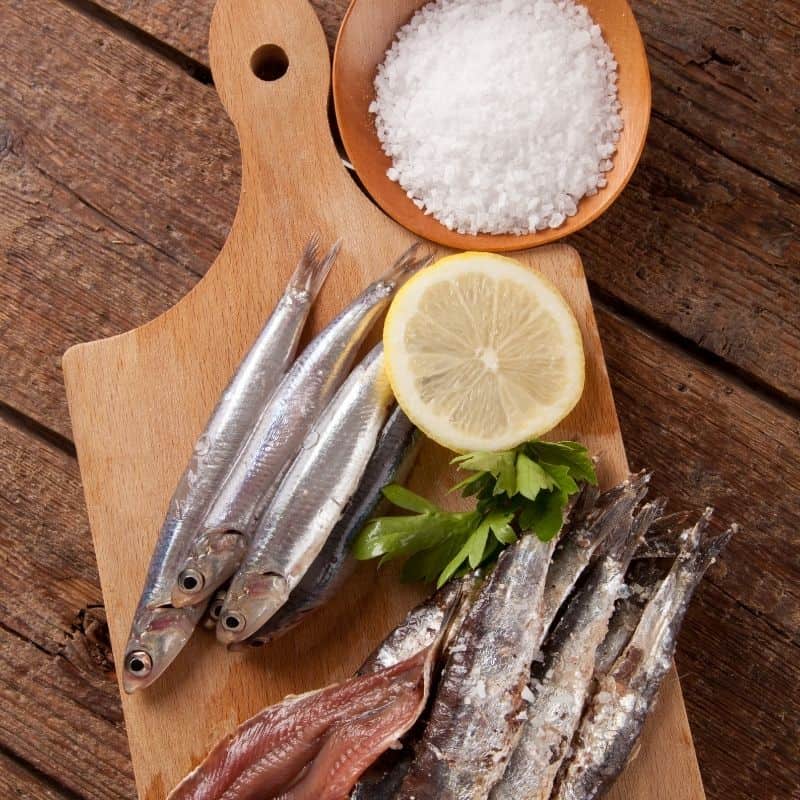
To make this anchovy vinegar recipe, you will need the following:
- 500 grams of anchovies
- Garlic
- Parsley
- Extra Virgin Olive Oil
- Vinegar
- Salt
How to Make Boquerones en Vinagre – Step by Step Instructions
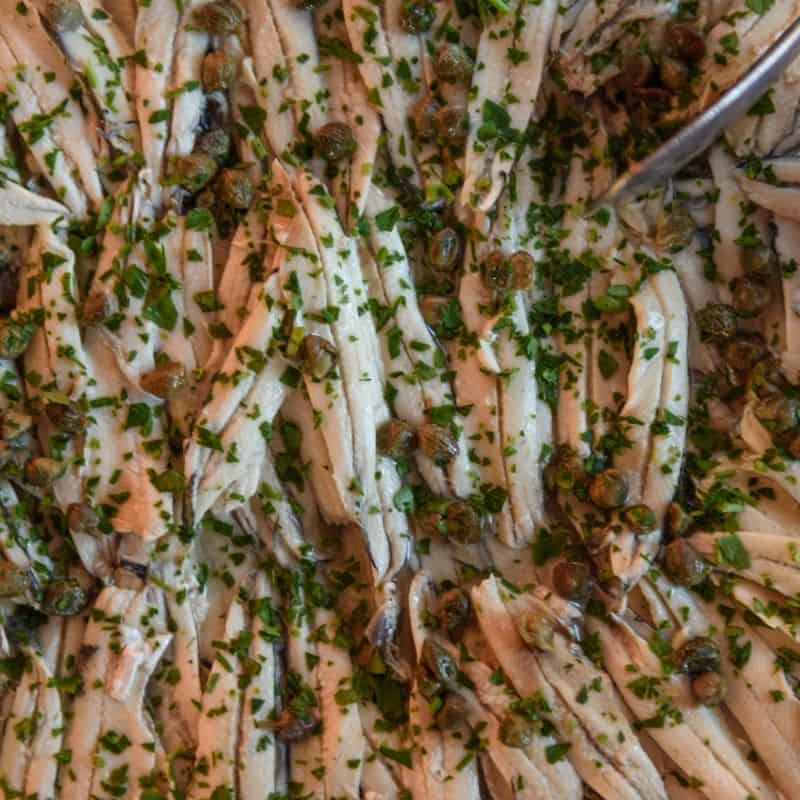
- The first thing you need to do is clean the anchovies, some stores sell them already clean, so if you feel intimidated by this step you should definitely buy them clean. But if you want to clean them yourself, here’s how you clean the raw fish: Remove the head of the anchovy, most of the guts and organs should leave the body at this point, then Insert your thumb into the anchovy belly and separate the spine from the body. After that, carefully remove any type of gut or part of the spine that might remain on the anchovy.
- Once you have the meat of the anchovy clean, you have to wash it with abundant water and rinse the anchovies; you can also place them in a bowl with ice cubes for 10 minutes so the meat will be more white (which translates into a better texture).
- After drying them (you can also dry them with a clean kitchen towel), place the anchovies right next to each other in a large bowl with the skin facing the bottom of the bowl or plate.
- Fill the bowl with enough vinegar to cover completely the anchovies. This way, the anchovies will marinate, and the vinegar will interact with the acids of the anchovy’s fat, and as a result, the flavors will be enhanced. If you don’t want a strong vinegar flavor you can make a mixture of ⅔ of vinegar and ⅓ of cold water, this way you’ll get a soft vinegar taste.
- Let it rest on the fridge for at least 5 hours, if you made the water and vinegar mixture then let it rest for 6 hours. You can let them marinate in the fridge for up to 24 hours!
- Wash with abundant water and rinse the anchovies to remove any excess vinegar. To avoid any bacteria risk (Anisakiasis bacteria, to be more specific), place the marinated anchovies on a Tupper with their skin facing the bottom of it, cover them with oil, and freeze them for 48 hours to the lowest temperature possible.
- After that, put them in the fridge so they will slowly defrost; once they unfreeze, they will be ready for the garlic and parsley!
- Chop very thinly garlic cloves and the parsley, then mix them with 4 tablespoons of oil and a pinch of salt.
- Throw away the oil that was frozen with the anchovies, and on a large plate, put the anchovies next to each other, then brush them with the garlic and parsley mixture.
- And that’s it; your anchovy appetizer is done! You can store it in the fridge for up to three weeks; just make sure to cover the plate or Tupper.
Substitution of Ingredients

In case you don’t like anchovies, or if you are vegetarian or vegan, but you still want to enjoy typical Spanish dishes there is a special version for you!
To make a Vegan version of anchovies in vinegar, you have to replace the anchovies with zucchini (or other similar vegetables of your choice), then peel it and cut it into strips (discard the seeds).
Place them in a large bowl with enough vinegar to cover all the zucchini pieces (about 200ml of vinegar), then let it rest for 4 hours or overnight.
If you want it to taste more like seafood, you just need to add seaweed nori to the previous mixture.
Once the time has passed, you have to strain the zucchini and wash it so it won’t have such a strong vinegar taste, then add two tablespoons of oil, garlic, and parsley, and that’s it!
You can keep it up to 3 days in the fridge.
Another substitution that you can make is to skip the parsley or garlic if you don’t like them, but I wouldn’t recommend it since they add an amazing flavor to these Spanish anchovies.
La Paella: Deliciously Authentic Rice Dishes from Spain’s Mediterranean CoastCarbon Steel Paella PanPaella Seasoning from SpainSpanish AioliOrganic Extra Virgin Olive OilForum – Spanish Cabranet Sauvignon Red Wine Vinegar – 500 mL
Tips on Serving Spanish Boquerones en Vinagre

In Spain anchovies in vinegar are commonly served as a Tapas, but what does that mean? In this boquerones tapas recipe, they are often served on top of toasted bread.
I recommend you brush a slice of bread with extra virgin olive oil, then toast it and put the anchovies on top; if you choose not to toast the bread, you will still get a delicious appetizer!
Some people also serve them with olives, caramelized onions, or even dried tomatoes; either way, you can go wrong with this Boquerones Tapas!
For other delicious traditional dishes, check out our guide on what to eat in Cordoba, Spain. You could also try making Spanish fried anchovies.
How to Store Anchovies in Vinegar
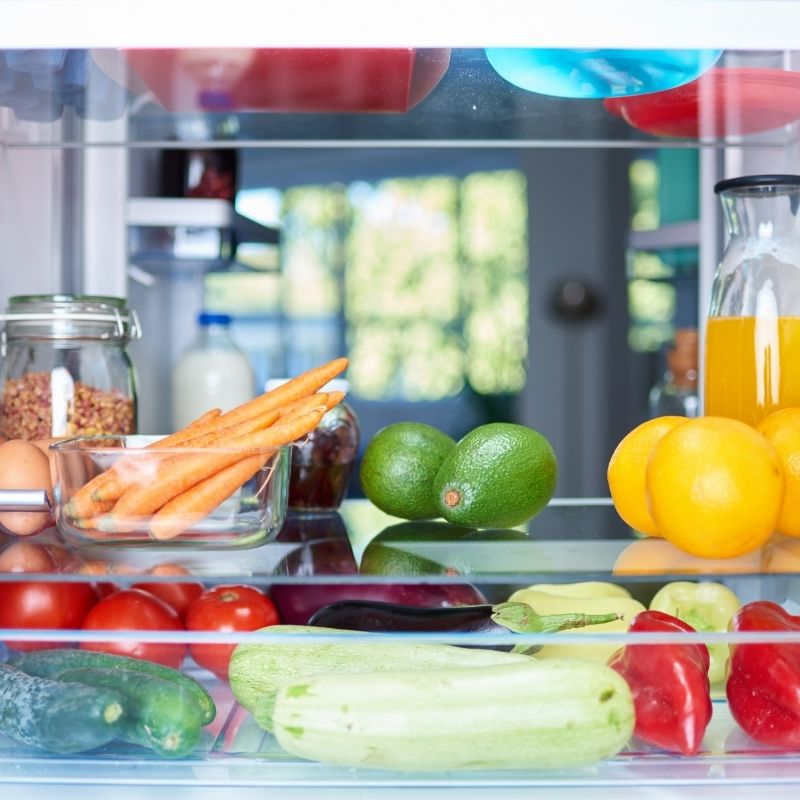
To store your anchovies appetizer, you can place them in a bowl and cover it for 3 weeks, but check on them often to make sure that they aren’t dry, so you should spread olive oil on your anchovies at least 4 days a week.
You can also divide the anchovies into different portions and freeze them with oil (already cleaned but without the oil, garlic, and parsley) for one month.
When you want to eat them, just take them out of the freezer and let them unfreeze, then add the oil, garlic, and parsley.
Don’t worry! They will still taste delicious, and you won’t have to worry about any bacteria.
If you can’t get enough of boquerones en vinagre, have a look at my webstory about anchovies in vinegar.
Boquerones en vinagre – Recipe Card
Boquerones en Vinagre from Spain
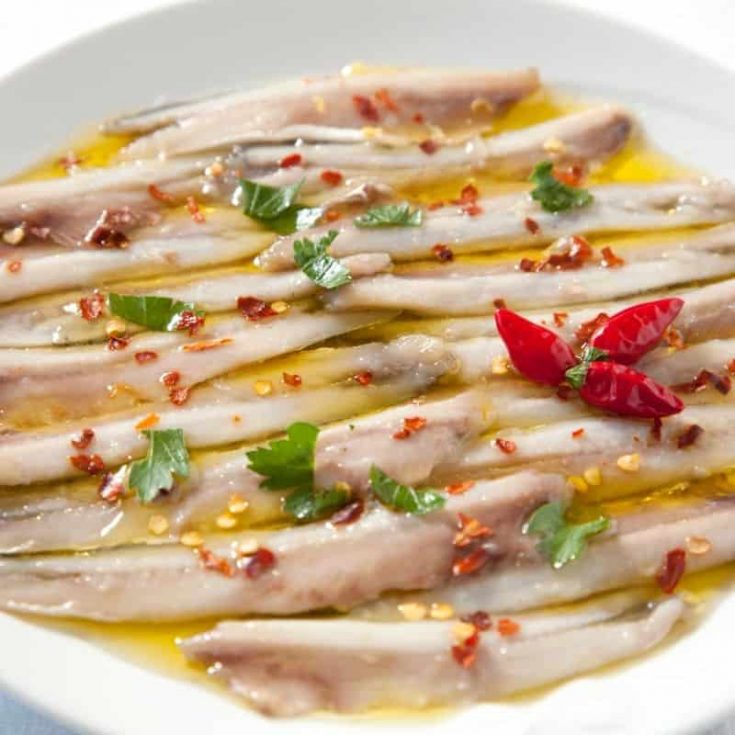
The Boquerones en Vinagre, which means Anchovies in Vinegar, is a type of appetizer that had its origins in Southern Spain, also known as Andalusía. Different historians agree that the origin of the anchovies in vinegar dates back to the 8th century, which means that they have existed for more than 3000 years!
Ingredients
- 500 grams of fresh anchovies
- 250ml of vinegar (of your choice, white, apple, etc.)
- 2 tablespoons of olive oil (extra virgin oil preferred)
- 4 garlic cloves
- Chopped parsley (to taste)
- 2 teaspoons of salt
Instructions
- Place the anchovies on a large bowl and rinse it with water.
- With a sharp knife cut off the head of the anchovies. Most of the organs should come out alongside the head.
- After that cut the anchovies in half and remove the rest of the organs with the spine.
- Spread the anchovies, rinse them and place them in an inoxidable bowl (it could also be a ceramic or clay bowl).
- Dissolve the salt on the vinegar, then cover the anchovies with that mixture.
- Cover the bowl (with a kitchen towel, plastic wrap, etc.) and let it rest on the fridge for 5 hours up to 24 hours.
- Once the time has passed, rinse the anchovies with water and clean them with a clean kitchen towel.
- After cleaning the anchovies, put them in the freezer for at least 48 hours to prevent any bacteria risk (especially the anisakis).
- Cover the anchovies with olive oil, garlic, and parsley and if you want to use a small plate you can place the anchovies on top of each other.
Notes
You can store the anchovies in vinegar for up to 3 weeks, but make sure that they are always covered in olive oil to keep them in a good condition. If you don’t want the vinegar taste to be too strong, you can mix ⅔ of vinegar with ⅓ of water and use that mixture to marinate the anchovies.
Nutrition Information
Yield
3Serving Size
1Amount Per Serving Calories 319Total Fat 17gSaturated Fat 3gTrans Fat 0gUnsaturated Fat 12gCholesterol 100mgSodium 1587mgCarbohydrates 1gFiber 0gSugar 0gProtein 34g
All information presented and written are intended for informational purposes only. You should not rely on this information as a substitute for, nor does it replace, professional medical advice, diagnosis, or treatment. If you have any concerns or questions about your health, you should always consult with a physician or other health-care professional. The writers and publishers of visitsouthernspain.com are not nutritionists or registered dietitians. Statements within this site have not been evaluated or approved by the Food and Drug Administration.
FAQs on Spanish Boquerones recipe
How to serve boquerones?
Boquerones are best served as a tapa, drizzled with olive oil, sprinkled with garlic and parsley, and accompanied by crusty bread or olives.
What are boquerones in Spain?
In Spain, boquerones are Spanish anchovies in vinegar, olive oil, garlic, and parsley, served as a popular tapa.
How to eat boquerones?
Spanish Boquerones are eaten by simply picking them up with a fork or toothpick and enjoying them on their own or with bread, often paired with olives or a glass of wine.

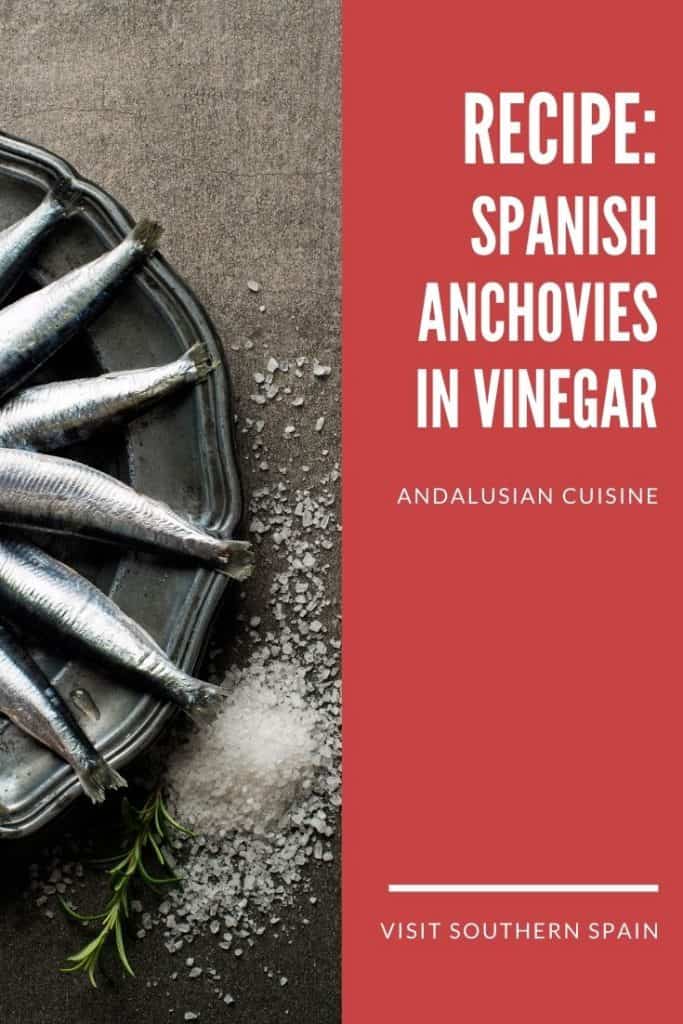

Hola, I’m Paulina! Together with my team, we are passionate about Southern Spain. Here we share all you need to know for great times in Southern Spain with the best places to visit, stay and, of course, the best food to eat.
Let’s dive in and explore Southern Spain’s outdoors, food and culture con pasión!

